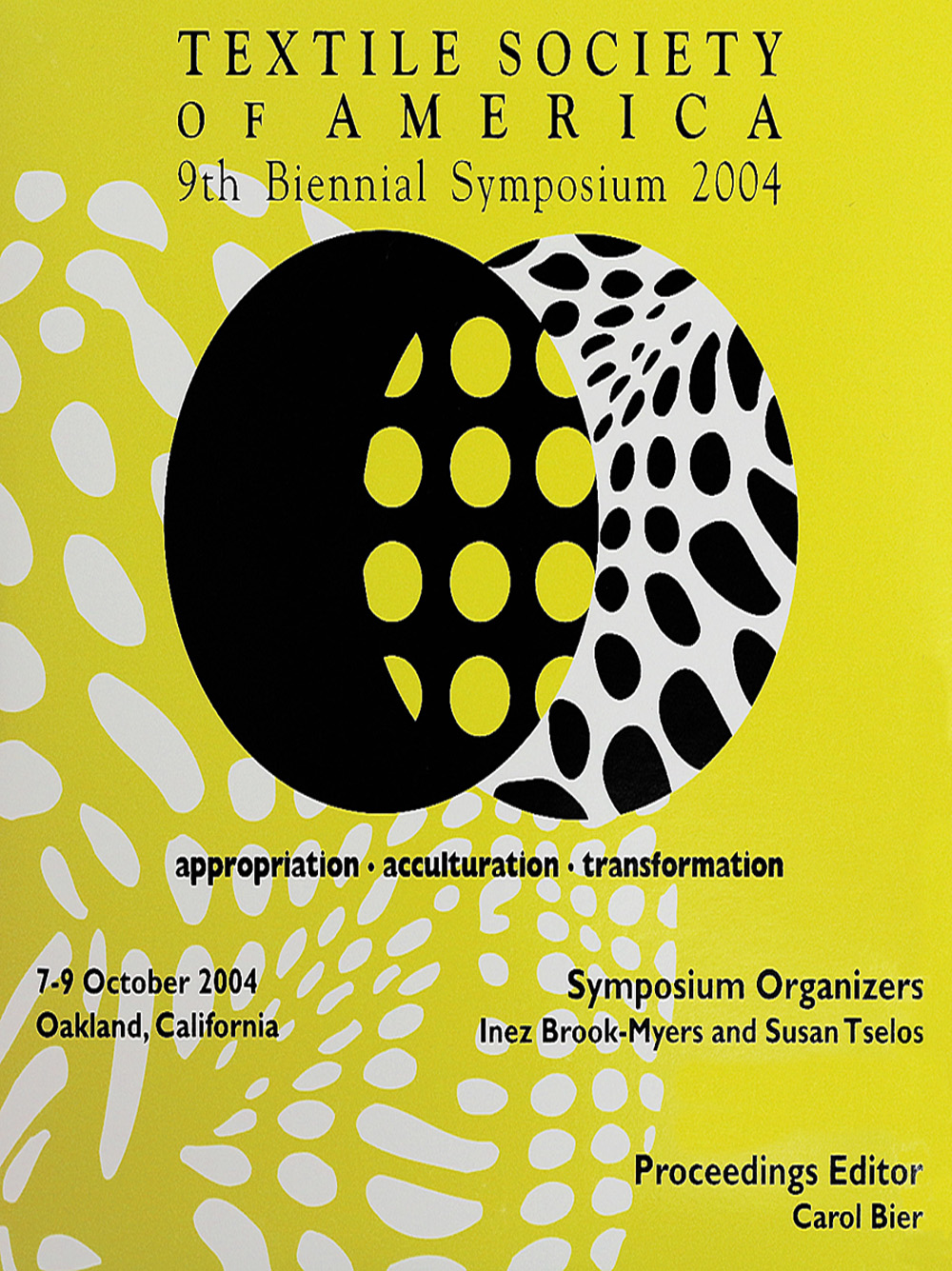
2004 Appropriation, Acculturation, Transformation
The Textile Society of America’s 9th Biennial Symposium took place October 7–9, 2004, at the Oakland Marriott City Center Hotel in Oakland, California. The theme as reflected in the title, appropriation • acculturation • transformation, offered a stimulating approach to the study of historic and contemporary textiles from many cultures and diverse perspectives. Of eighty presentations in twenty-four sessions, seventy are represented in this CD-ROM. Sixty-seven authors have contributed sixty-two papers.
Together with more than seventy abstracts, they reflect in text and image the substance and intellectual vibrancy that characterized this symposium.
Geographically, the San Francisco Bay Area is where East greets West, where the landmass of North America abuts the Pacific coast, a meeting point of cultures that comprise the Pacific Rim. Historically, the Bay Area has witnessed dramatic creativity in the textile arts: from the native peoples of California, world renowned for their basketry through the early Spanish, Mexican, and Yankee settlers who traded local goods for silks from Asia and the Pacific, to the days of the Golden Gate International Exposition in 1939- 1940 and the early work of Dorothy Liebes. More recently, the Bay Area has continued to attract people with a passion for fiber: the “Textile Revolution” of the 1970s was fueled by the contributions of Ed Rossbach, Lillian Elliott, Kay Sekimachi, Katherine Westphal and their followers. An area with a long record of scholarly contrarianism and counter-cultural initiatives, this geographic nexus had spawned more than its share of debates about terminology surrounding textiles, fiber arts, and textile arts, and deliberative consideration as to how these concepts relate to more formally recognized and accepted arts.
At the Opening Reception, the Local Organizing Committee honored four “Living Legends” of fiber arts in the Bay Area: Dominic Di Mare, Kay Sekimachi, Lydia Van Gelder (who exhibited at the Golden Gate International Exhibition), and Katherine Westphal. They and other key players who contributed to the history and creativity of fiber arts in the San Francisco Bay Area provided a lively focus for this symposium. Lead keynote speaker Jack Lenor Larsen presented a lucid synthesis of the national impact of California design, including the role played by textiles in the Bay Area, in relation to the movements of Modernism, indoor-outdoor lifestyles, and subsequent significant national cultural trends. The plenary panel focused on the profound significance of textile arts and scholarship in the Bay Area. Providing an historical overview covering most of the 20th century, panelists addressed the seminal impact of the study of textiles, a subject taught at the University of California, Berkeley, from 1917–79 in a department variously called Household Arts, Decorative Arts, and Design. Native American basket-maker Julia Parker, a Coast Miwok and Kashaya Pomo, shared her approach to practice that embodies respect for wisdom of the elders and awareness of its transmission in the preservation of traditions. She spoke of the importance of the environment and its bounty. In looking to the future, she reminds us of the urgent needs for both conservation and the effective utilization of resources.
